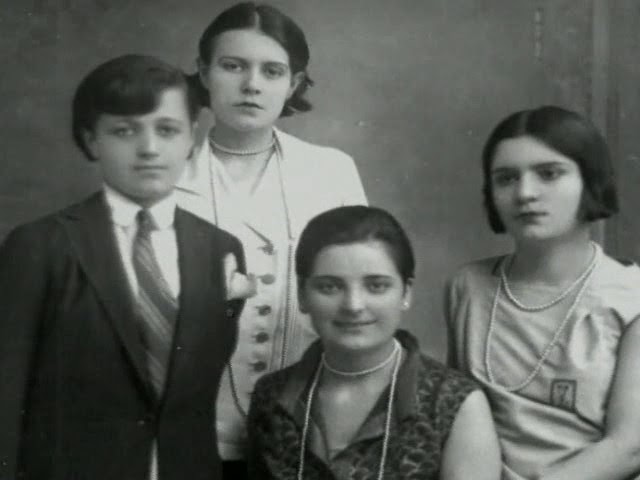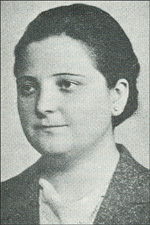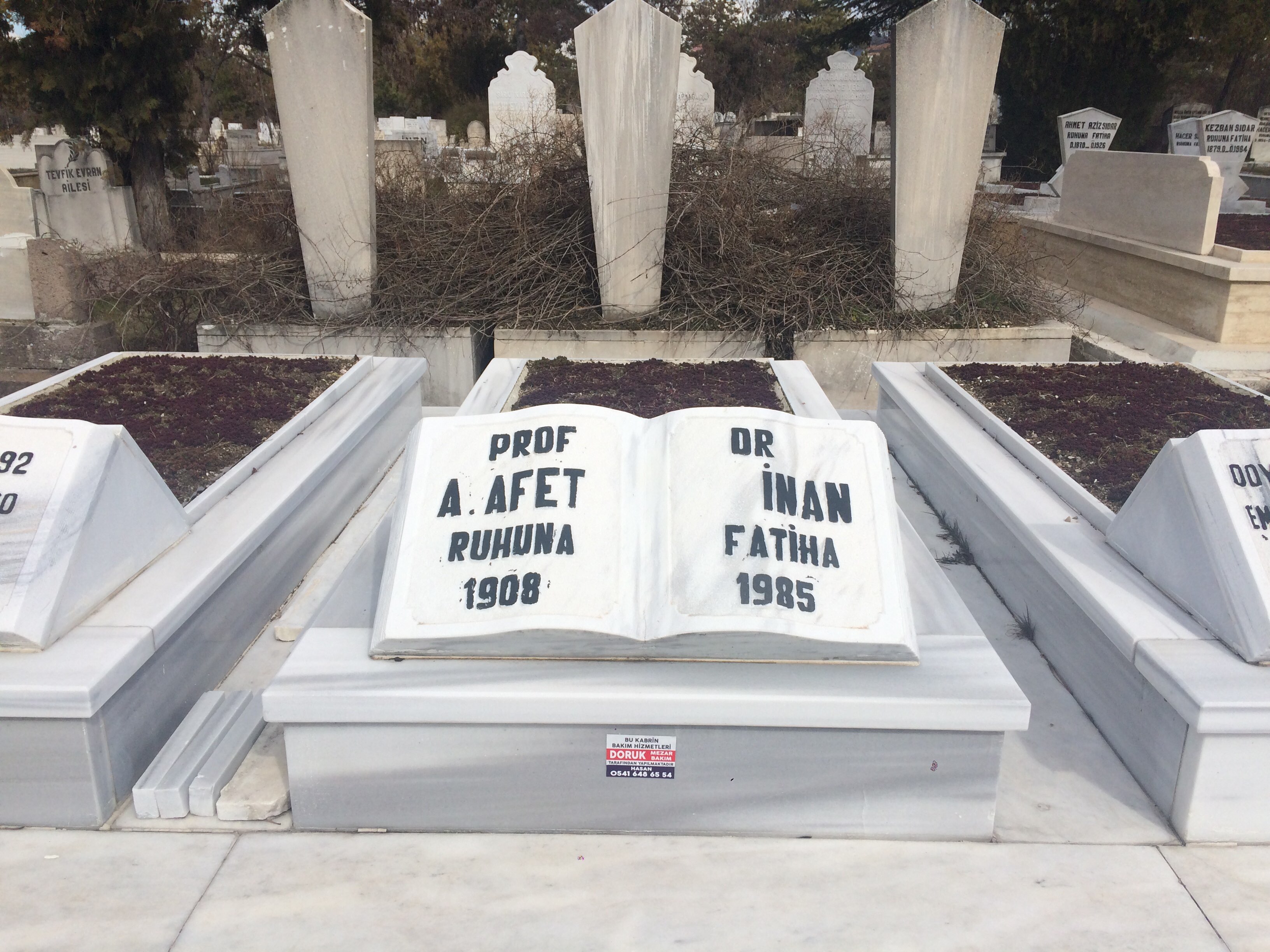1. Overview
Ayşe Afet İnan, born on October 30, 1908, and passing away on June 8, 1985, was a distinguished Turkish historian, sociologist, and anthropologist. She was one of the eight adopted daughters of Mustafa Kemal Atatürk, the founder of the Republic of Turkey. İnan made significant contributions to Turkish academia, particularly through her extensive work in physical anthropology, which notably included measuring over sixty thousand skulls across Anatolia in an effort to support the Turkish History Thesis. Her academic career saw her rise to a professorship at Ankara University and play a foundational role in the Turkish Historical Society. Beyond her scholarly pursuits, İnan was also a vocal advocate for women's rights and social progress in Turkey, leaving a complex legacy that encompasses both celebrated academic achievements and scholarly controversies.
2. Biography
Ayşe Afet İnan's early life was marked by displacement and a strong drive for independence, leading her to pursue education and a career in teaching before her pivotal meeting with Mustafa Kemal Atatürk.
2.1. Early Life and Family Background
Ayşe Afet İnan was born in 1908 in the district of Kesendire (Polyoroz, present-day Kassandra, Greece), which was then part of the Salonica Vilayet of the Ottoman Empire. Her parents were İsmail Hakkı Bey (later İsmail Hakkı Uzmay) and Şehzane Hanım, who hailed from Doyran (present-day Dojran). Due to the Balkan Wars, İnan and her family were forced to emigrate to Adapazarı in Turkey. Tragically, her mother, Şehzane, died from tuberculosis on May 15, 1915. Following her father's remarriage to a younger woman, Ayşe Afet resolved to become a teacher to secure her own livelihood. While living in Biga, her younger sister Nezihe was born to her father and his second wife.
2.2. Education and Early Career
İnan began her primary education in Adapazarı on March 4, 1913. Her family's circumstances led them to frequently relocate, moving to Ankara, Mihalıççık, Karaoğlan, and Biga. She completed her six years of primary education in 1920. In 1921, the family settled in Alanya. The following year, in 1922, she obtained a teaching qualification in Elmalı and was appointed as the headteacher of the Elmalı Girls' School. In 1925, she graduated from the Bursa Teachers College for Girls and subsequently began her career as a primary school teacher in İzmir. It was during Mustafa Kemal Atatürk's visit to İzmir in October of the same year that she met him, a meeting that would profoundly alter the course of her life.

3. Academic Career and Research
Ayşe Afet İnan's academic journey was marked by rigorous study and significant contributions to the fields of history, sociology, and anthropology, culminating in her influential role within Turkish academia.
3.1. Higher Education and Doctoral Studies
In 1925, Mustafa Kemal Atatürk sponsored İnan's studies, sending her to Lausanne, Switzerland, to learn the French language. She returned to Turkey in 1927 and enrolled at the French Lycée Notre Dame de Sion Istanbul. After completing her studies there, she was appointed as a secondary school history teacher. Driven by a desire for further academic pursuit, İnan returned to Switzerland in 1935. Between 1936 and 1938, she studied under Eugène Pittard at the University of Geneva, focusing on anthropology and sociology. Her dedication to these fields culminated in 1939 when she successfully obtained a PhD in sociology.
3.2. Professorship and Academic Affiliations
Following her doctoral studies, İnan continued to advance her academic career in Turkey. In 1950, she achieved the prestigious position of professor at the University of Ankara, a testament to her scholarly achievements and expertise. She was also a pivotal figure in the establishment and development of the Turkish Historical Society, serving as a co-founder and a leading member of the institution. Her involvement with the society underscored her commitment to shaping historical discourse and research in Turkey.

3.3. Anthropological Research and the Turkish History Thesis
Ayşe Afet İnan is particularly known for her extensive work in physical anthropology. Her research involved the meticulous measurement of over sixty thousand skulls across Anatolia. This ambitious project was undertaken with the explicit aim of providing empirical support for the Turkish History Thesis. The Turkish History Thesis, a nationalist historical narrative, posited that the Turkish people were the original inhabitants of Anatolia and the source of many ancient civilizations. İnan's anthropological studies sought to establish a biological link between the modern Turkish population and ancient Anatolian civilizations, thereby bolstering the thesis's claims.
3.4. Major Writings and Publications
İnan's academic contributions are reflected in her numerous published works, which span history, sociology, and anthropology. Her significant publications include:
- Medeni bilgiler ve M. Kemal Atatürk'ün el yazıları (Civic Information and M. Kemal Atatürk's Manuscripts), Ankara, Türk Tarih Kurumu, 1969. This work likely compiled or analyzed Atatürk's personal notes on civic education.
- Atatürk'ten yazdıklarım (What I Wrote from Atatürk), Ankara, 1969. This publication suggests a personal account or compilation of her interactions and learning from Atatürk.
- Recherches Sur les Caractéres Anthropologiques des Population de la Turquie (Research on the Anthropological Characteristics of the Population of Turkey), Genève, 1939. This was her doctoral thesis, directly related to her extensive skull measurement project.
- Türk Amirali Piri Reis'in Hayatı ve Eserleri (Life and Works of the Turkish Admiral Piri Reis). This indicates her historical research into significant Turkish figures.
- L'émancipation de la Femme Turque (The Emancipation of the Turkish Woman). This work highlights her interest and contributions to social issues, particularly women's rights.
- Eski Mısır Tarih ve Medeniyeti (History and Civilization of Ancient Egypt), 1956. This demonstrates her broader historical research interests beyond Turkish history.
3.5. Contributions to Women's Emancipation
Ayşe Afet İnan was a fervent advocate for the advancement of women's rights and their social status in Turkey. Her commitment to social progress was notably articulated in her work, L'émancipation de la Femme Turque. Through her writings and public engagement, she actively explored and promoted ideas related to the liberation and empowerment of women within Turkish society, reflecting her dedication to modernizing and reforming social structures in line with the principles of the nascent Turkish Republic.
4. Personal Life
4.1. Family
Ayşe Afet İnan was married to Rıfat İnan. Together, they had two children: a daughter named Arı İnan and a son named Demir İnan. Her family life was an integral part of her personal narrative, alongside her prominent public and academic roles.
5. Death
5.1. Circumstances of Death
Ayşe Afet İnan passed away on June 8, 1985, in Ankara, the capital city of Turkey. She was laid to rest in Cebeci Asri Cemetery in Ankara.

6. Legacy and Evaluation
Ayşe Afet İnan's legacy is multifaceted, encompassing her significant academic contributions, her role as a prominent public intellectual, and the enduring scholarly discussions surrounding her work.
6.1. Recognition and Awards
In recognition of her lasting impact on historical studies, the "Afet İnan Historical Studies Award" was established. This prestigious award is given biennially by the Turkish History Foundation in cooperation with İnan's family, honoring her contributions and encouraging further research in the field of Turkish history.
6.2. Scholarly Impact and Societal Influence
İnan's academic work and public contributions left a considerable mark on Turkish academia and societal development. As a professor at Ankara University and a co-founder of the Turkish Historical Society, she played a crucial role in shaping the institutional framework for historical and social sciences research in Turkey. Her dedication to promoting women's rights also contributed to the ongoing discourse on social progress and gender equality in the country. Her work, particularly her books and research, continues to be a subject of study and discussion within Turkish academic circles.
6.3. Criticism and Controversies
Despite her prominent position and contributions, Ayşe Afet İnan's research, particularly her extensive work in physical anthropology, has been subject to criticism and controversy. Her project of measuring over sixty thousand skulls across Anatolia was explicitly aimed at providing scientific backing for the Turkish History Thesis, a nationalist narrative that sought to establish the Turks as the original inhabitants of Anatolia and the progenitors of ancient civilizations. Critics have raised questions regarding the scientific validity and methodologies employed in this research, suggesting that the studies may have been designed to support a predetermined political agenda rather than adhering to objective scientific inquiry. The potential social and political implications of such research, especially in shaping national identity and historical narratives, have also been a point of contention, leading to ongoing scholarly debates about the objectivity and long-term impact of her anthropological studies.
7. External links
- [http://www.kimkimdir.gen.tr/kimkimdir.php?id=586 Biography]